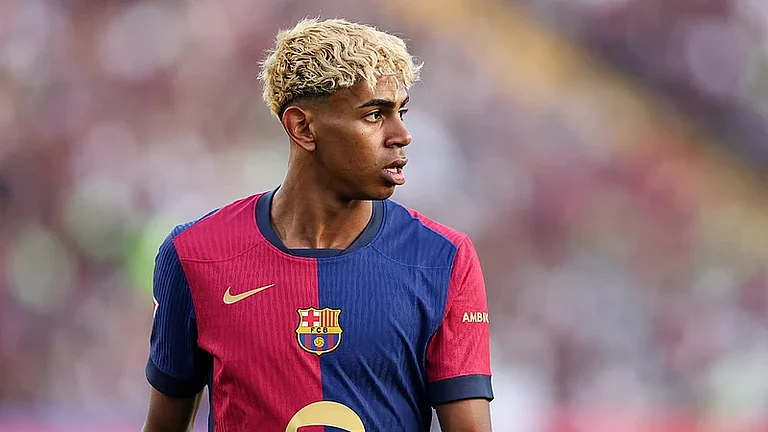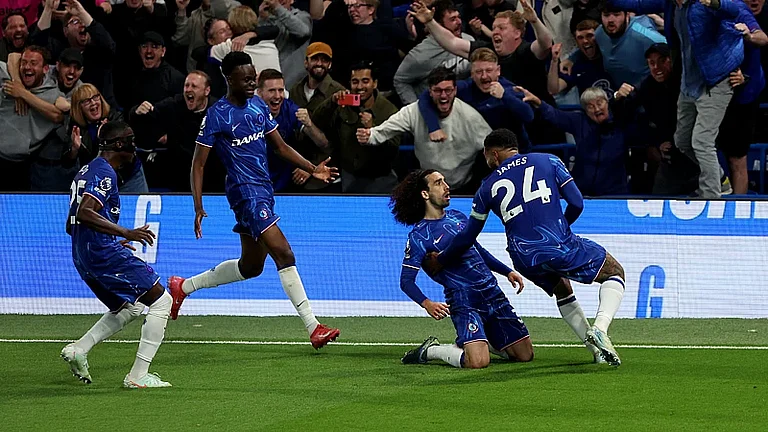On August 13, 1980, Uttar Pradesh’s Moradabad district witnessed the worst communal clashes since Independence on Eid-Ul-Fitr, in which, as per the official figures, 83 people lost their lives and 112 sustained injuries. The riots spread to the other districts of the state and communal clashes were reported until November that year.
Following the riots, the UP government set up the one-member Justice Mathura Prasad Saxena Commission in 1981 which submitted its report in 1983. No government bothered to release it—until now.
On August 8 this year—43 years after the riots—the state government tabled a report of the judicial commission, which has given a clean chit to the district administration, Bharatiya Janata Party (BJP), Rashtriya Swayamsevak Sangh (RSS), and Hindu and Muslim residents. The report indicts Indian Union Muslim League (IUML) leader Dr Shamim Ahmad and Khaksar leader Dr Hamid Hussain for the “pre-planned” violence. Along with the BJP and the RSS, the 458-page report has also exonerated the police and the civil administration—accused of firing at Muslims indiscriminately.
While the IUML leaders denied their involvement and have blamed the then Congress government instead, the blame, and the fact that the report was released nearly four decades later, is not helping the riot-affected families get any closure.
Incidentally, the 2013 Muzaffarnagar riot victims, too, are waiting for closure. As per official figures, more than 60 people lost their lives and 40,000 were displaced in the riots, but over the years, more than a thousand were acquitted and only a few cases have seen convictions. Many families are still waiting for justice.
The 775-page report of one-man Justice Vishnu Sahai Commission, which inquired into the Muzaffarnagar riots of August-September 2013, was tabled in the Uttar Pradesh Assembly on March 6, 2016. It, too, stopped short of placing the blame on the state government, police and other government administrative arms.
“Moradabad Riots pre-planned”
Outlining the violence in Moradabad, the August 8 report says 60-70,000 Muslims had gathered for namaz when the rumour spread that a pig had strayed into the Idgah. There was a Dalit locality nearby where pigs were reared and there had been a history of Dalit-Muslim animosity, too. The report says that the rumour was completely fabricated.
The report further says: “This was pre-planned and was a product of their mind as Dr Shamim Ahmad’s popularity had fallen a lot after losing the previous election … Common Muslims did not create trouble at the Idgah. It was completely a clash of some insecure Muslims [leaders] and administration and police as there was a tussle for the leadership of the Muslim community.”
Notably, for years, the Moradabad Riots have often been termed ‘police-Muslim’ violence that turned into Hindu-Muslim riots only later. The Saxena Commission Report says that along with the rumour of a pig straying into the Idgah, the other rumour that fuelled the fire was “thousands of Muslims had been killed by police” elsewhere in Moradabad which led to the frenzy at the Idgah. After this, stone-pelting and attacks by knives and spades on police, officials, and Hindus began in the area. DP Singh, the Additional District Magistrate (ADM), was lynched and police posts were attacked. In all, 34 died in the stampede at the Idgah.
In all, major rioting happened at 13 places and minor incidents happened at seven more places, according to the report.
Three incidents in the run-up to the riots are also notable in the report. In the first, a Dalit girl aged 17-18 was raped allegedly by a Muslim man. In the second, a Muslim man was found dead after the rape came to the fore. In the third, the wedding procession of the girl was attacked by a Muslim mob associated with the accused in her rape case. The three incidents had created Hindu-Muslim tensions prior to the August 13 violence.
“This was the handiwork of the IUML led by Dr Shamim Ahmad and Dr Hamid Hussain alias Hajji who led ‘Khaksars’ along with their supporters and hired personnel,” says the report in Hindi, adding that the violence was “pre-planned” with the intention to secure the leadership of Muslims.
Khaksar was a Muslim movement rooted in the anti-colonial movement that trained Muslims in the use of spades and has been described at various points as a ‘private army’ of its founder Allama Mashriqi and a ‘Muslim militia’.
Moradabad and Muzaffarnagar: The Same Playbook
Decades after politics and rumours came together to trigger one of the worst episodes of communal violence in Moradabad, the same playbook was invoked in Muzaffarnagar in 2013.
In Kawal village, three murders ostensibly triggered communal violence that killed dozens and displaced 40,000. A girl was harassed allegedly by a Muslim man. The girl’s cousins—Hindu Jats—clashed with the Muslim man and killed him. In retaliation, the two cousins were also killed. Like it happened in Moradabad, the ground for the riots is shaky.
Media reports say the FIR into the Kawal case does not mention harassment at all and says the two cousins fought with the Muslim man over a motorcycle accident.
Within hours of the clashes, the District Magistrate and the Senior Superintendent of Police (SSP) of Muzaffarnagar were transferred out—the district was left headless as communal violence brewed. The local Samajwadi Party (SP) leader was said to be the force behind the transfer.
The BJP and Bahujan Samaj Party (BSP) leaders, along with khap figures, took rival positions and held mass-meetings that also came under attack. A three-year-old video was shared as a video of Hindu cousins’ lynching—a part of the fake news propaganda. Among the leaders who emerged as regional political stars was Sangeet Som of the BJP.
The riots polarised Western Uttar Pradesh for many years. The Jat-Muslim social contract was broken and it was reflected in the 2014 General Elections and 2017 Assembly elections and political observers say it’s not yet mended entirely despite the bonhomie visible in the year-long farmers’ movement against the BJP-led Union government during 2021-22.
Communal riots barely ever happen without the patronage of the ruling party and mostly benefit it politically, says Kaviraj, a longtime observer of UP’s politics, who is Professor, the Department of Political Science, University of Lucknow. Ironically, however, it is the BJP that’s understood to have gained politically in West UP from the Muzaffarnagar riots despite the SP being in charge of the state at the time—and also being at the helm of administrative mismanagement that worsened the situation, such as repeated transfers of officers, he adds.
The Politics of Communal Riots
Politics pushed the Saxena Commission Report into oblivion and its politics that has now led to its release. Kaviraj says that the Uttar Pradesh government has released the report now to target the Congress and press upon the Muslim voters that the party that seeks their votes by claiming to be their well-wisher is actually the one that patronised violence against them.
“The BJP wants to show Congress as being responsible for communal violence. Even though Congress is not a major player in UP, the BJP seeks to discredit the image of Congress among minorities in other states where it has a presence. The BJP wants to show with the report that Congress uses minorities as a vote bank to come to power and, once in power, it uses them in riots,” he says.
As for the political benefit, Kaviraj says the communal politics saves the BJP from caste consolidation as it competes with caste-based parties in UP and Bihar—such as SP, Rashtriya Lok Dal (RLD), BSP, etc. Such benefits have not yet got over.
“You and I can get over the violence, but people affected by it don’t get over it very quickly. No Jat-Muslim bloc was seen as such as in the 2022 Assembly elections as the BJP performed much better than expected in UP West,” says Kaviraj when asked if the polarization of the Muzaffarnagar riots is a thing of the past now.
As the BJP gears to face the Opposition bloc INDIA, the party is bringing out incidents from the past to discredit the de-facto coalition leader Congress—whether it is the Moradabad riots report or the Prime Minister’s mention of Indira Gandhi’s aerial campaign in Mizoram.
Despite such efforts, closure for those affected remains a dream. For Moradabad, both Ahmad and Hussain are dead and cannot be held accountable. In Muzaffarnagar, out of over 500 cases filed, only a handful have seen convictions. Of the seven rape cases, six have fallen apart and only one has seen conviction.


























